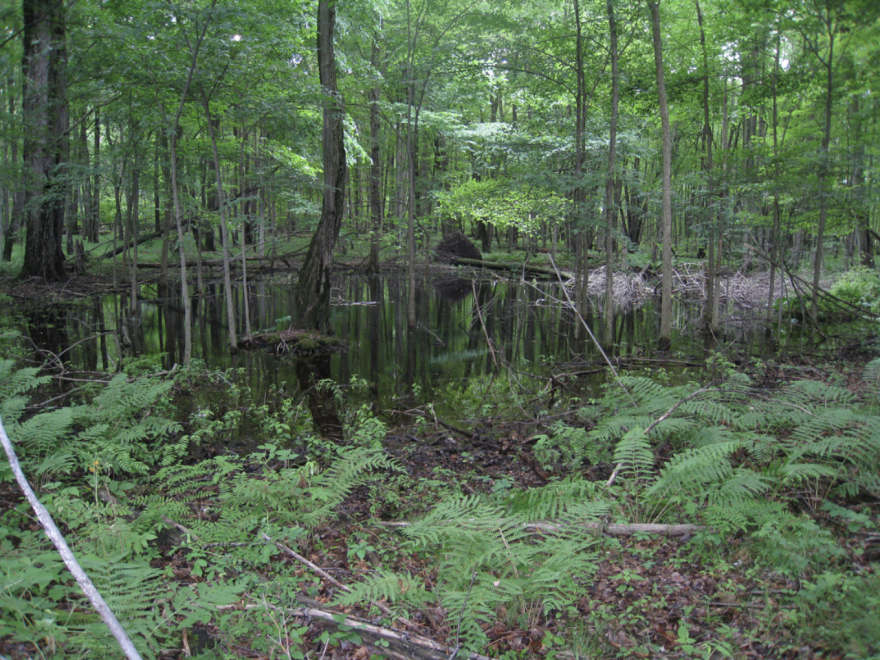If you’ve ever taken a brisk walk through the woods and noticed what seems to be a large puddle of water on the forest floor, there may be more to it than meets the eye. You just might have spotted a vernal pool — a delicate wetland ecosystem that appears each spring.
Michigan’s glacial hills are the perfect environment for vernal pools, which form each year from a mixture of snowmelt and rain. At first glance, the pools look like any other unsuspecting body of water, but under the surface they are teeming with wetland creatures. Michigan State University conservation scientist Yu Man Lee has been studying vernal pools for years, and says they are one of the state’s most important breeding habitats.
“We've documented over 100 different species of invertebrates in vernal pools in Michigan, and 15 of the 24 amphibian species that occur in Michigan use vernal pools for breeding to some degree,” said Lee.

Every year, species like spotted blue salamanders, wood frogs, and fairy shrimp lay their eggs within the vernal pools, leaving their larvae to mature. Until summertime comes and the pools dry up, they provide food for surrounding predators — like the red-shouldered hawk. The large forest pools are thriving ecosystems, so you might want to think twice before puddle-jumping on a rainy day.
“I mean, they are sensitive environments, so we do want to minimize the amount of disturbance and walking around that we do in them, but you can, you know, walk around the edges of vernal pools and still see fairy shrimp and egg masses of some of these amphibian species,” said Lee.

Like many wetland ecosystems, vernal pools are at risk of being negatively affected by climate change. MLive reporter Emily Bingham recently published an article about the importance of Michigan’s vernal pools, and said that their ephemeral nature can make them particularly tricky to study.
“Vernal pools face many of the same threats that all wetlands do, but they present a really unique challenge for conservationists because they're only there part of the time, and then they just disappear,” said Bingham.
Despite their crucial role in wetlands and local food webs, there are no solid protections in place for Michigan’s vernal pools. Though some vernal pools within certain distances of streams, rivers and the Great Lakes may already be protected under current wetland regulations, environmental advocates are still fighting for broader regulations to protect the pools. In the meantime, researchers are working hard to learn everything they can about these special ecosystems.
“As I understand it, there have not been any official rules put in place yet for protection measures for them,” said Bingham. “Which is why these vernal pools are now being studied on a statewide level to try to gather the kind of data that might be helpful for eventually putting some of these protection measures in place.”









